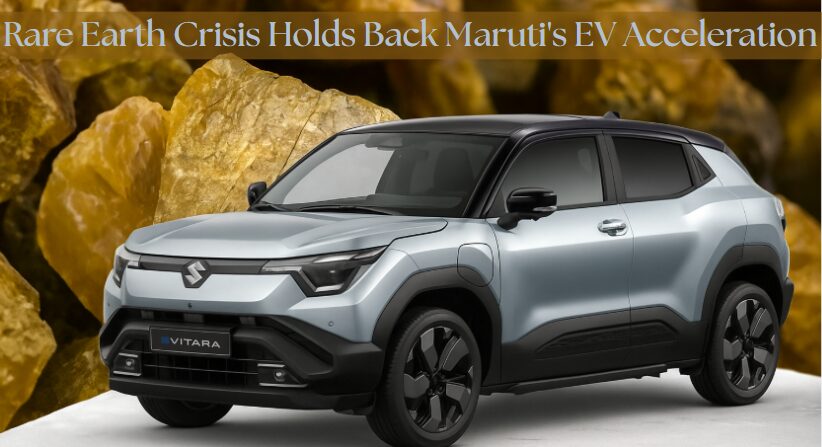4-Point Overview: What’s Really Happening?
- China’s Rare Earth Clampdown Hits India – A new Chinese export policy has cut off access to rare earth magnets—key components for EV motors—creating a global supply chain mess.
- Maruti’s EV Ambitions Take a Temporary Hit – With fewer magnets available, Maruti’s short-term production plan for the e-Vitara drops by nearly 70%.
- Long-Term Hopes Still Alive – Maruti hasn’t given up—production is expected to ramp up to 67,000 units by the end of FY26.
- India’s Auto Industry Calls for Help – Carmakers are urging the Indian government to step in and help speed up approvals from China—or better yet, boost local alternatives.
Introduction: A Hindrance No One Saw Coming
Just when things were looking exciting for India’s EV journey, Maruti Suzuki, the country’s biggest & dominant carmaker, has had to hit the brakes. The much-awaited e-Vitara, Maruti’s first major electric vehicle, was set to be a bold entry into the EV race. But now, thanks to a global shortage of rare earth elements, the plan is being scaled down—big time.
Maruti had initially aimed to roll out 26,000 units of the e-Vitara by September 2025. But due to a sudden supply crisis, they’ve revised that number to just 8,000 units. While the long-term goal of hitting 67,000 units by FY26 is still on, the road ahead now has a few unexpected potholes.
Table: The e-Vitara Production Plan—Then vs Now
| Timeline | Original Plan | Revised Plan | Why the Change? |
|---|---|---|---|
| April–September 2025 | 26,000 units | 8,000 units | Shortage of rare earth magnets due to China’s curbs |
| Full Year FY26 | N/A | 67,000 units | Recovery phase to catch up on EV rollout goals |
But What Are Rare Earths and Why Do They Matter So Much?
Think of rare earth elements as the unsung heroes inside every electric vehicle. They’re critical for building high-performance magnets that power EV motors, especially those found in electric SUVs like the e-Vitara. The twist? China controls over 90% of the world’s supply and refining of these magnets.
In April 2025, China placed fresh restrictions on exporting these materials. While the U.S., Europe, and Japan have managed to get special permits from Beijing, India is still waiting in line. And that’s led to delays, production cuts, and a lot of head-scratching in the boardrooms of Indian auto companies.
How Is Maruti Responding?
To its credit, Maruti Suzuki isn’t panicking. In fact, Chairman R.C. Bhargava recently said there’s no immediate disruption in production—yet. But clearly, things have shifted behind the scenes.
The company’s strategy now focuses on catching up later rather than rushing production now. The idea is to avoid half-baked rollouts and instead ensure a full-scale, smooth e-Vitara launch when supplies normalize. There’s also buzz about exploring alternative sourcing and local manufacturing, which could be the silver lining to this global hiccup.
Conclusion: A Pause, Not a Full Stop
Let’s be honest—this isn’t the EV debut Maruti Suzuki or Indian consumers were hoping for. But in a global industry that’s rapidly evolving, setbacks like this are part of the journey. The rare earth crisis may have slowed things down, but it has also exposed a bigger issue—India’s over-dependence on imported components for its green future.
The good news? Companies like Maruti are still all in. The e-Vitara isn’t cancelled—it’s just reloading.

